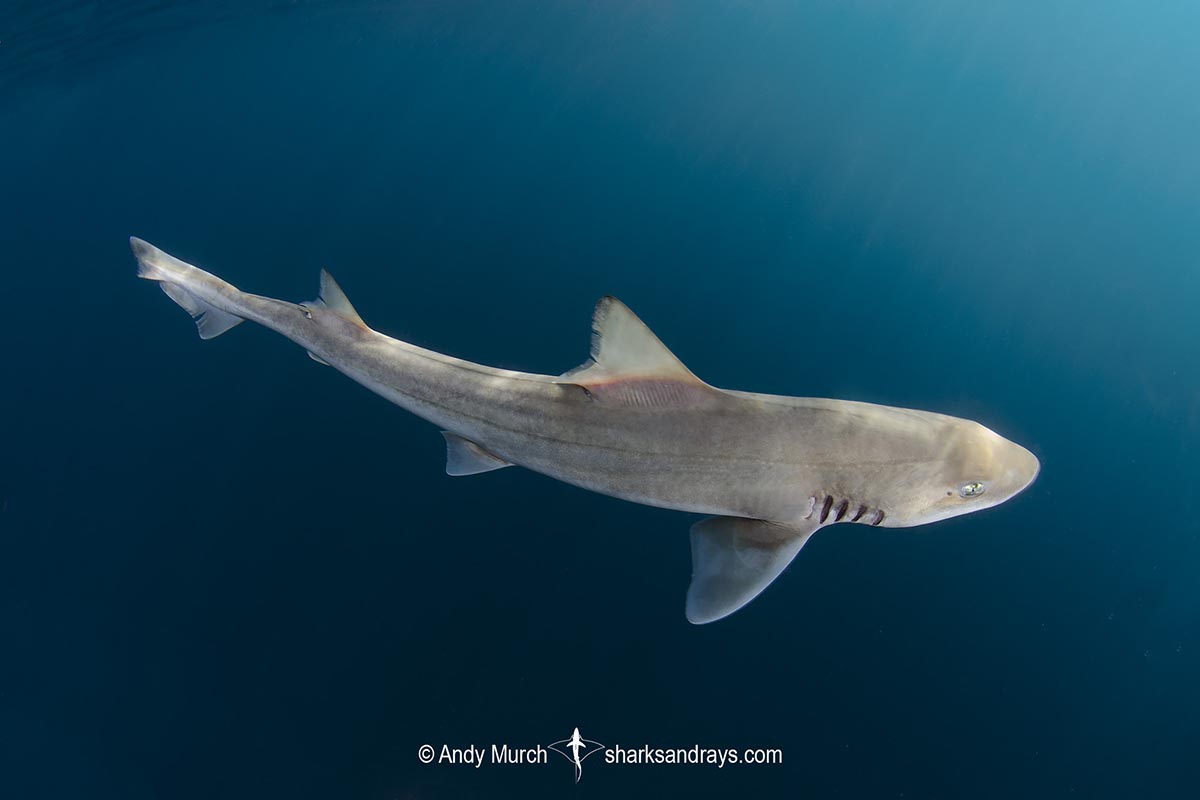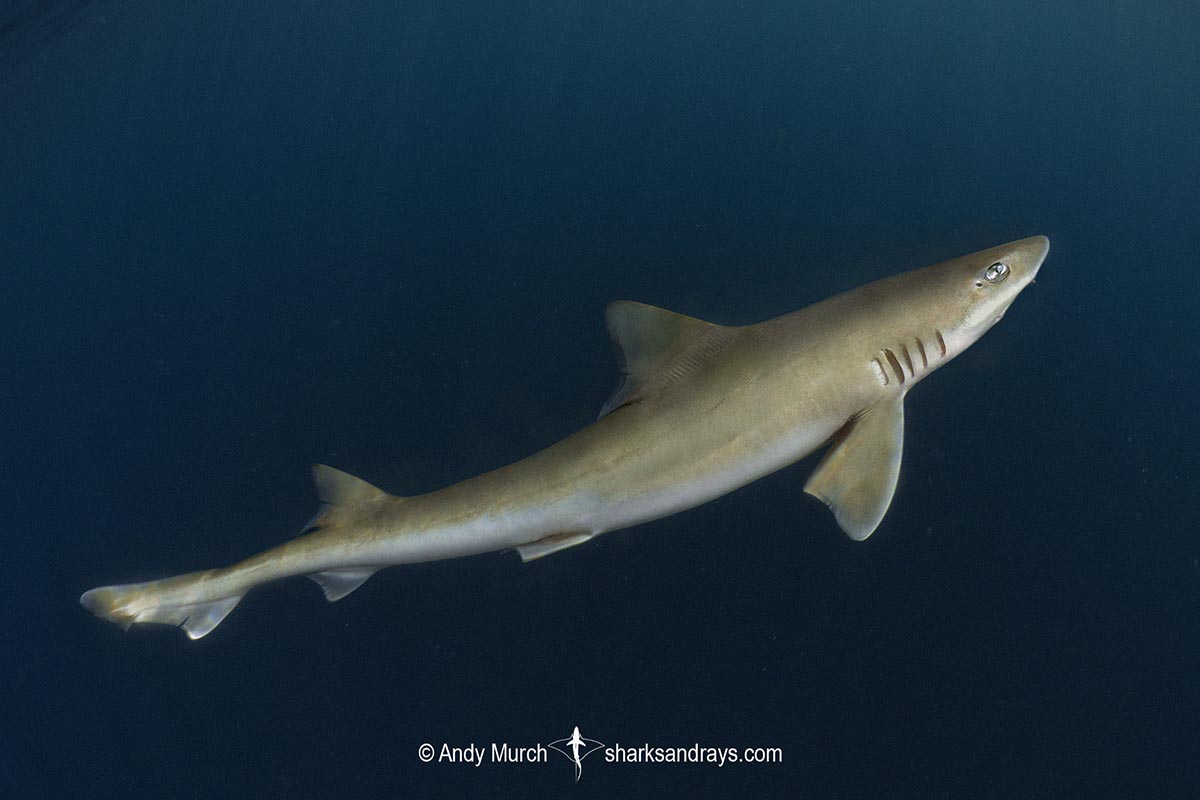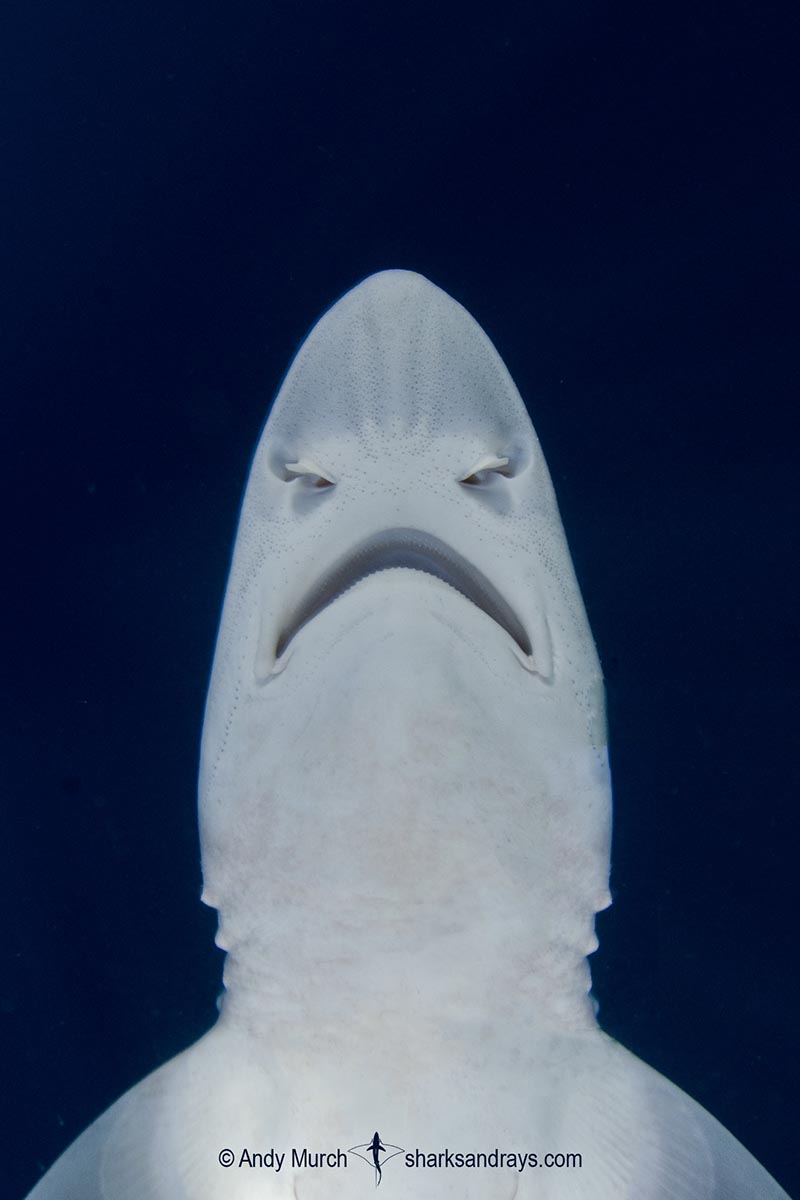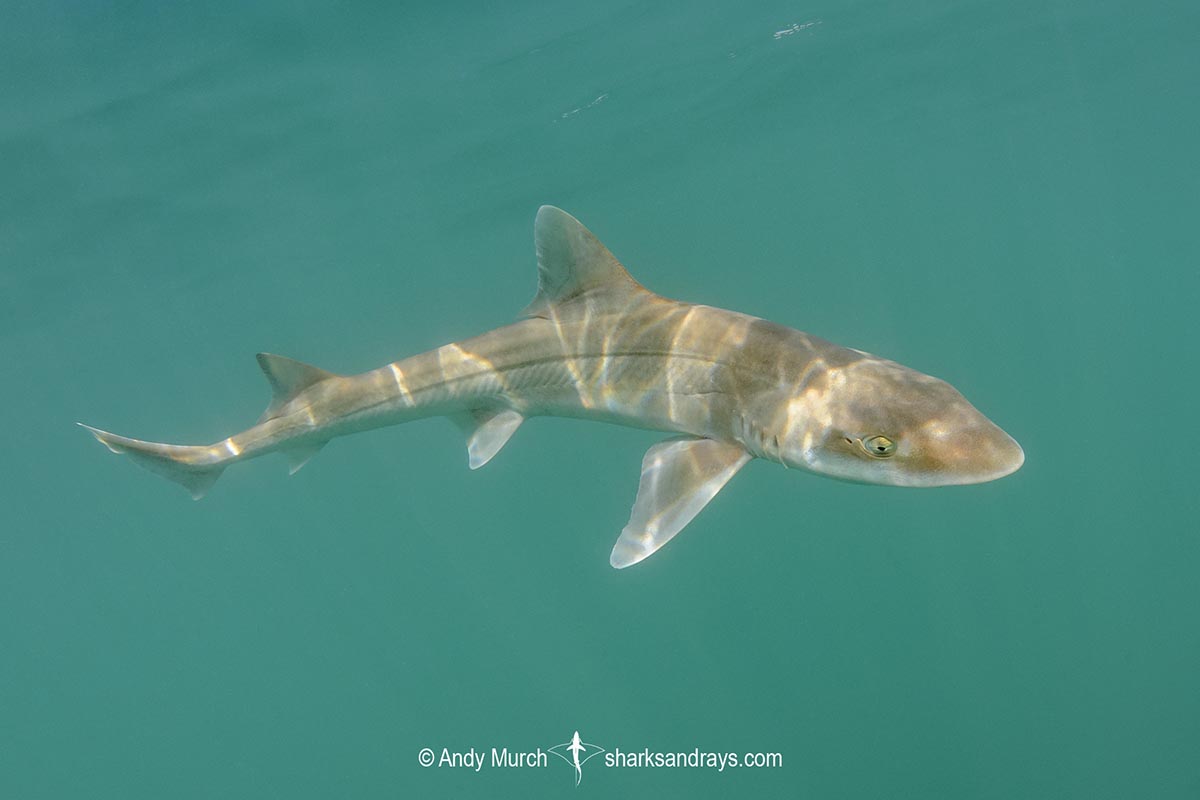Common names
Brown Smoothhound Shark.
Binomial
Mustelus henlei.
Synonyms
Rhinotriacis henlei, Triakis henlei.
Identification
Body slender. Snout fairly long and pointed. Upper labial furrows noticeably longer than lower. Small, visible spiracle behind eye. First dorsal fin origin over pectoral fin free rear tip. Second dorsal fin much larger than anal fin. First and second dorsal fin posterior margins, and terminal margin of upper caudal lobe frayed. Lower caudal lobe indistinct. Dorsal coloration brown with bronzy hues. Fins sometimes dusky.
Size
Maximum length 97cm. Size at birth 28-30cm.

Conservation Status
LEAST CONCERN
Although it is heavily targeted in the Sea of Cortez, the brown smoothhound is a fast growing species, that is able to withstand fishing pressure. No declines have been reported across its range.

Habitat
A temperate water species inhabiting shallow muddy or sandy bays and estuaries. Present in deeper water closer to the equator. Intertidal to 278m.
Distribution
The brown smoothhound shark occurs from Washington State to southern Peru.
Reproduction
A viviparous species with yolk-sac placenta. 1-21 pups per litter. Gestation is approximately 10 months. Reproductive cycle is annual.
Diet
Predates heavily on crustaceans but will also eat bony fishes and polychaete worms.
Behavior
The brown smoothhound shark migrates towards the equator during the colder months. Known to swim onto very shallow, enclosed mud flats (e.g. at Elkhorn Slough near San Francisco) to feed.
Reaction to divers
Rarely seen by divers but likely very shy due to its small size.
Diving logistics
Part of the reason that brown smoothhounds are rarely encountered by divers is that they tend to hunt in extremely turbid inshore water. Pier fishermen in San Fransisco Bay consider them abundant so this might be a good spot to dive in order to see one. Unfortunately, visibility in the bay is apparently horrendous so I am not sure if this is a feasible suggestion.
My shots are of released animals that I encountered while accompanying halibut fishermen in Guerrero Negro, Mexico.
What’s new
View our full list of updates
Similar species
Grey Smoothhound Shark This species (and all other smoothhounds present in the eastern Pacific) is distinguished by its dorsal and caudal fins that have un-frayed margins.


